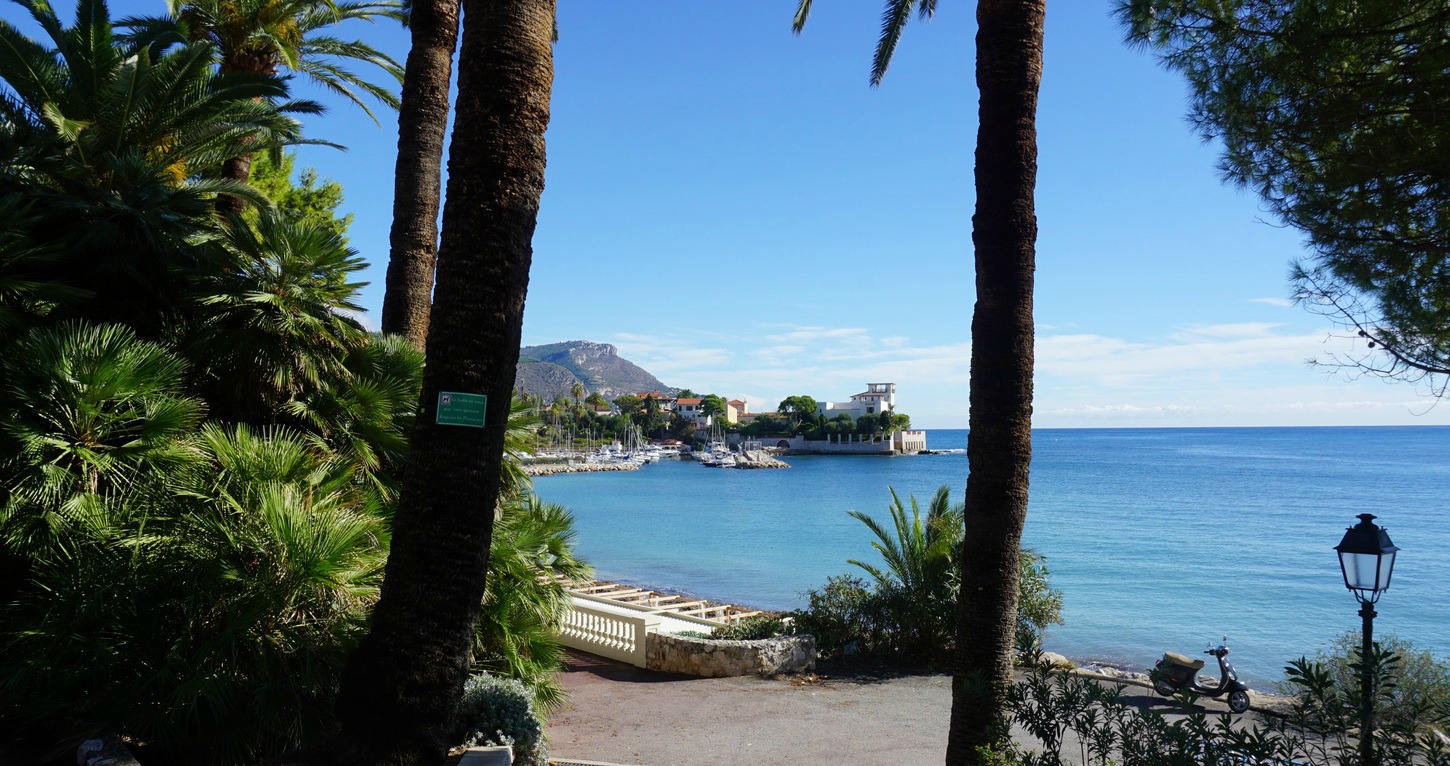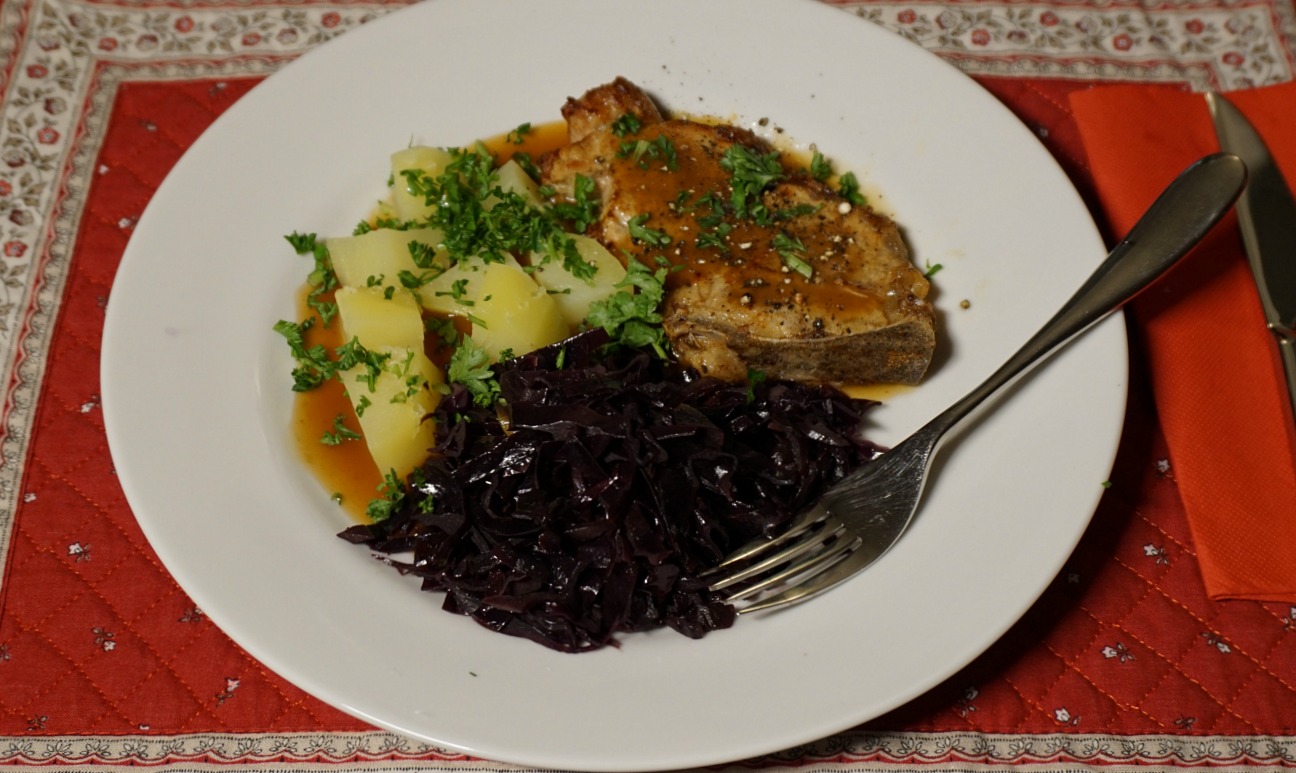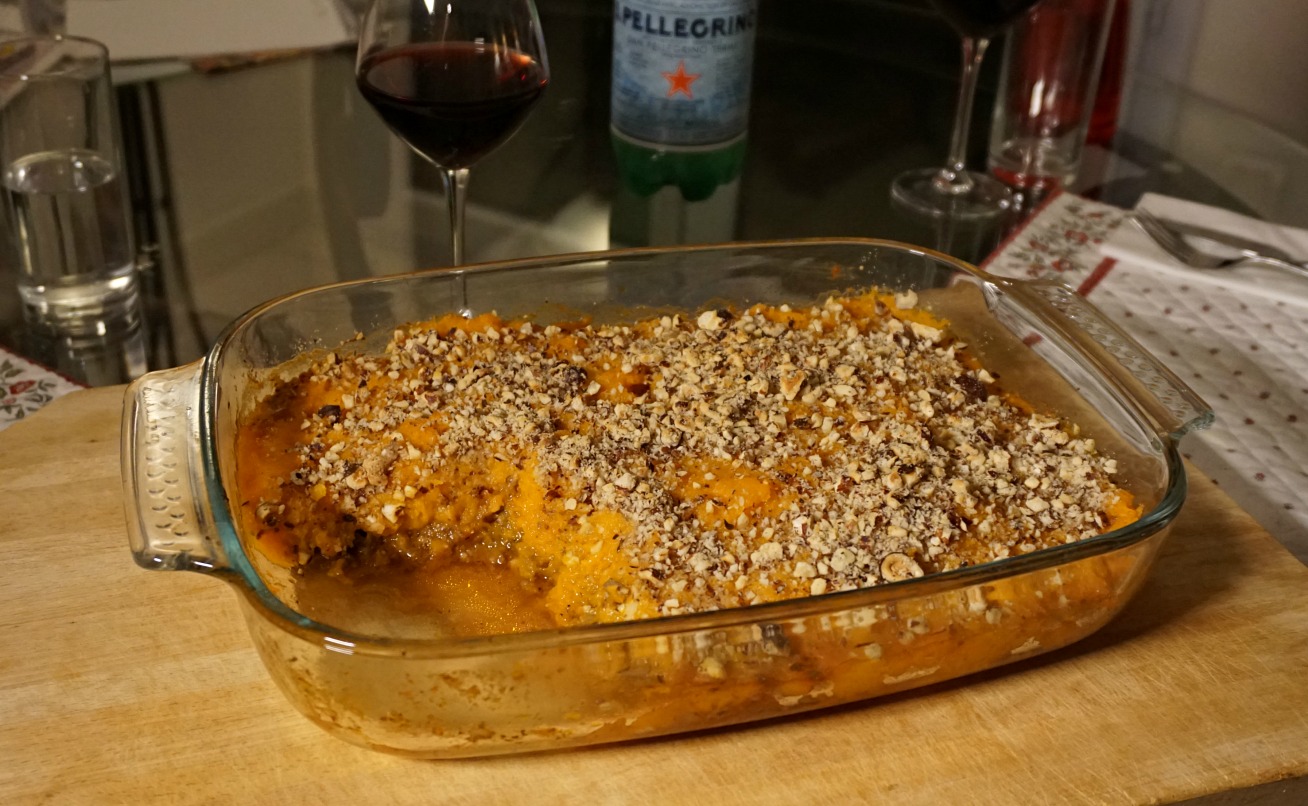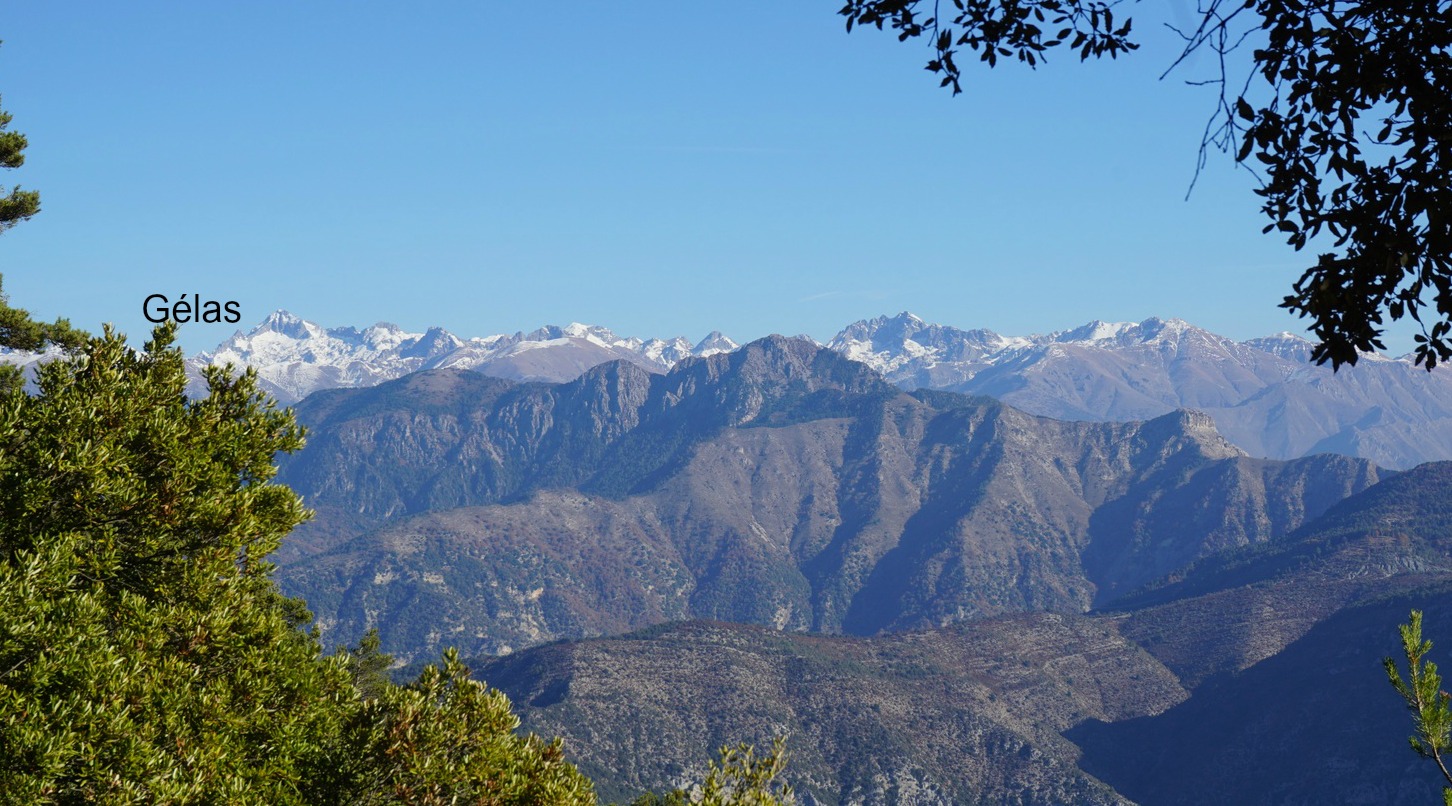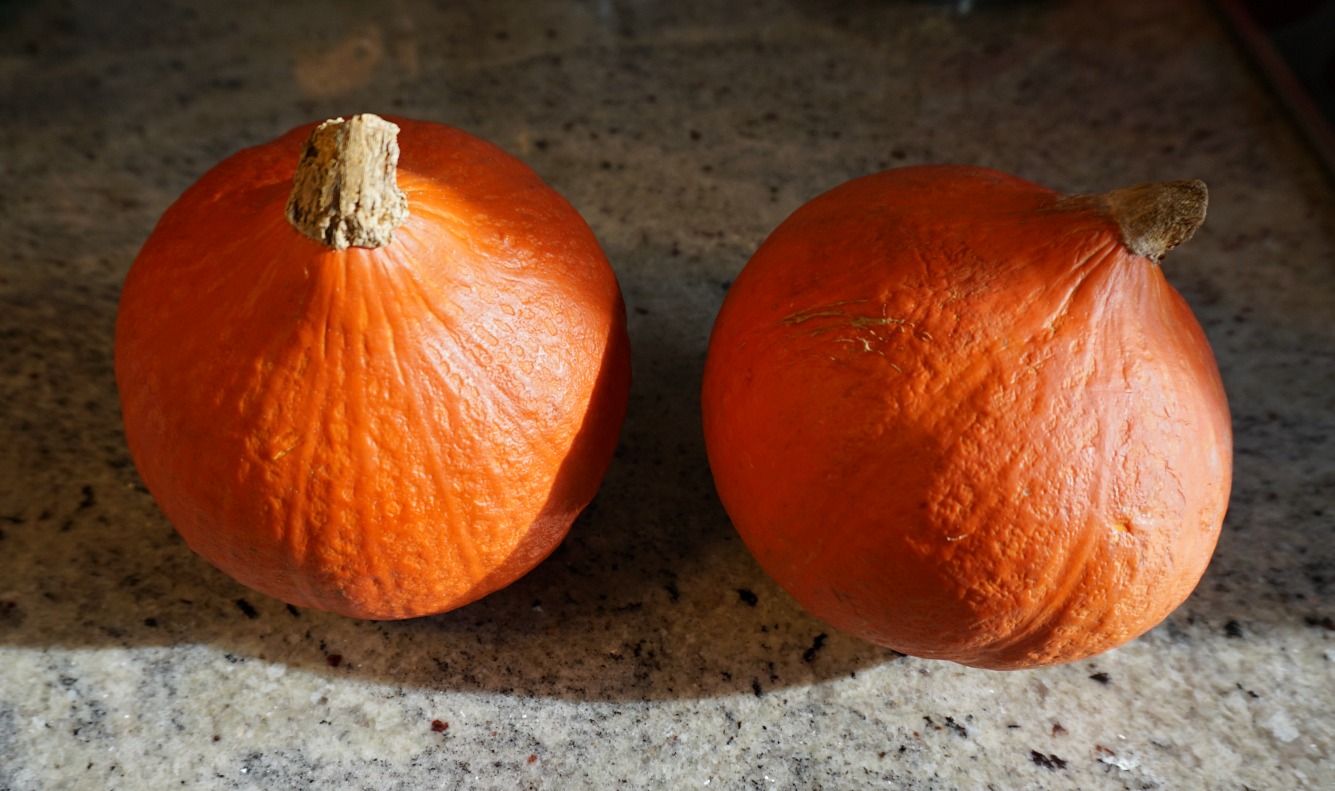Provencal Lamb Stew
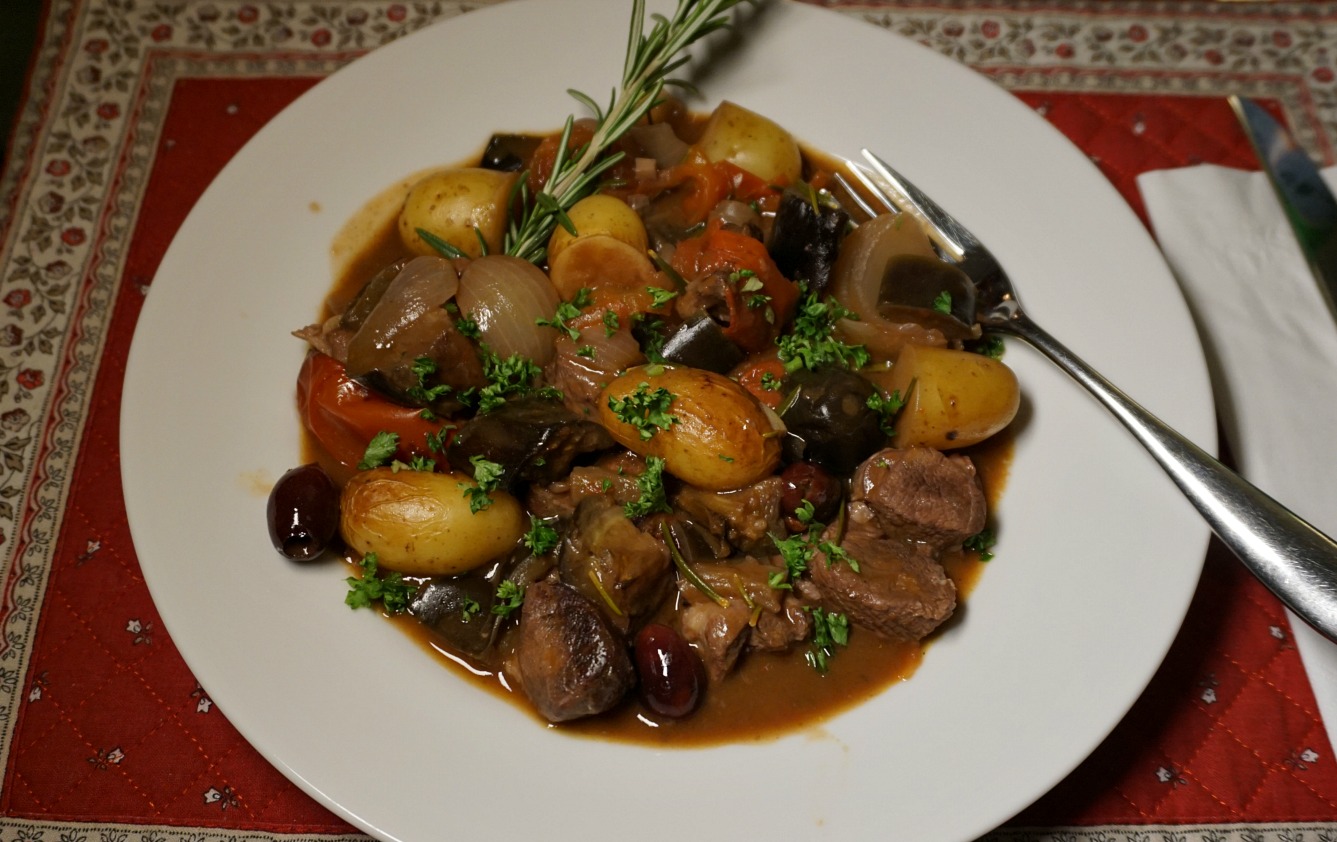
This stew is a brilliant, carefree party dish, because it can be made the day before and just reheated slowly while the guests are having apéro, nibbles with drinks.
A whole lamb shoulder normally weighs about 1100 g, sometimes even more, but after the bone and most of the fat layer covering the shoulder are removed, the remaining amount of meat is for four generous servings. Any stew leftovers can be frozen and incorporated later into a pasta sauce.
4 servings
About 600- 800 g lamb shoulder, cut into about 3x3 cm cubes
3 tbsp. olive oil
About 15 small new potatoes (20 if they are tiny)
3 plum tomatoes, quartered
2 onions, coarsely chopped
2- 3 cloves garlic, minced
1 small aubergine, cut into 3x3 cm cubes
100 ml tomato sauce
2 tbsp. flour
1 fresh bay leaf
1 sprig of fresh rosemary
1 orange peel
Black pepper
300 ml red wine
400 ml chicken or beef stock
4 tbsp. black olives
Fresh parsley and 4 sprigs of fresh rosemary for decoration
Preheat the oven to 180° C.
Spread olive oil in the bottom of a heavy casserole, such as Le Creuset. Add the lamb and aubergine cubes, onions, garlic and the flour and mix. Add all the other ingredients, except the olives, then pour in the wine and stock until the ingredients are almost covered. Place in the oven and bake for 2 hours.
The surface will get nicely browned. Stir occasionally so that the surface does not get too browned and dry. When the stew is baked, remove the herbs and orange peel and add the olives.
Divide on the plates and decorate with parsley and a rosemary sprig.




















